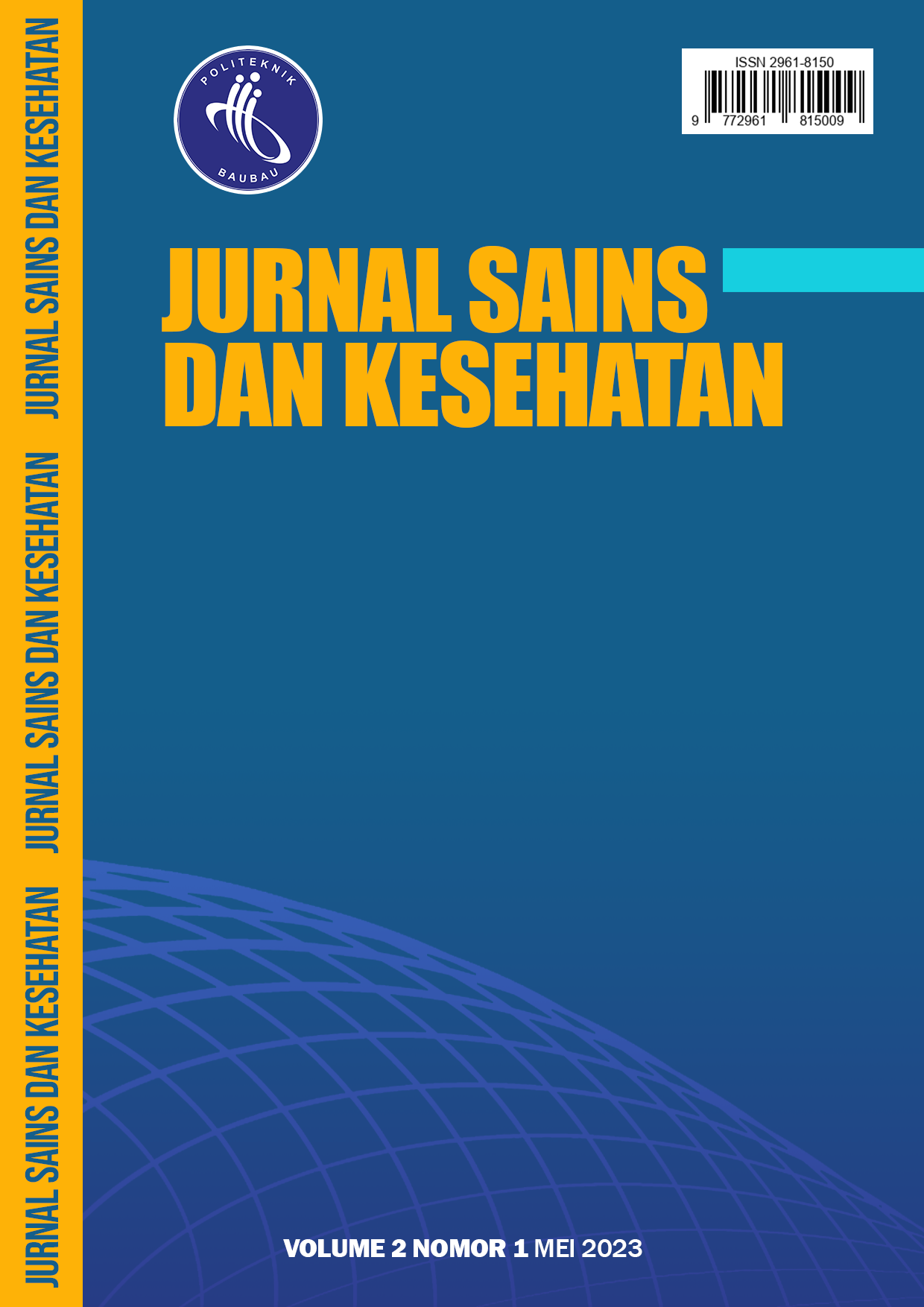Hambatan Pelaksanaan Program Directly Observed Treatment Short - Course (DOTS) di Negara Berkembang : Sebuah Tinjauan Sistematik
Main Article Content
Abstract
Tuberculosis is a global burden with most cases occurring in developing countries. After the implementation of Directly Observed Treatment Short-course (DOTS), the incidence of tuberculosis decreased. Despite, studies reported constraints in implementing this program. This study aims to describe the challenges of DOTS implementation in developing countries narratively. Methods a search strategy through PUBMED was used to identify relevant articles. 10 relevant articles were included from 349 records. The studies were conducted in 8 developing countries namely South Africa, Sub-Saharan Africa, Brazil, Ethiopia, Indonesia, Angola and Nigeria. All articles included was extracted and categorized in ten main points regarding the challenges of the implementation of DOTS program. Results: There were 10 main points of challenges in implementing the DOTS strategy in developing countries : lack of access to health centres, managerial and organizational service problems, lack of health education-related tuberculosis, lack of supervision, TB co-infection, lack of trained health workers, smoking, alcohol, and drug abuse during treatment, patient-health professional relationship, lack of food availability and interruption during treatment. The Conclusion is the implementation of the DOTS strategy encounters many challenges in developing countries where lack of health facilities, managerial and organizational service problems and lack of education-related TB are the main challenges to implement the program.
Article Details
References
Brady, P., & Vita, D. (2018). Challenges To Tuberculosis Control In Angola: The Narrative Of Medical Professionals. Journal of Public Health, 40(4), 820–826. https://doi.org/10.1093/pubmed/fdx159
Chakaya, J., Khan, M., Ntoumi, F., Aklillu, E., Fatima, R., Mwaba, P., Kapata, N., Mfinanga, S., Hasnain, S. E., Katoto, P. D. M. C., Bulabula, A. N. H., Sam-Agudu, N. A., Nachega, J. B., Tiberi, S., McHugh, T. D., Abubakar, I., & Zumla, A. (2021). Global Tuberculosis Report 2020 – Reflections On The Global TB Burden, Treatment And Prevention Efforts. International Journal of Infectious Diseases, 113, S7–S12. https://doi.org/10.1016/j.ijid.2021.02.107
Cheepsattayakorn, A. (2013). Drug-Resistant Tuberculosis—Diagnosis, Treatment, Management and Control The Experience in Thailand. IntechOpen.
Corbett, E. L., Marston, B., Churchyard, G. J., & De Cock, K. M. (2006). Tuberculosis In Sub-Saharan Africa: Opportunities, Challenges, And Change In The Era Of Antiretroviral Treatment. The Lancet, 367(9514), 926–937. https://doi.org/10.1016/S0140-6736(06)68383-9
Erah, P., & Ojieabu, W. (2010). Success Of The Control Of Tuberculosis In Nigeria: A Review. International Journal of Health Research, 2(1). https://doi.org/10.4314/ijhr.v2i1.55382
Fiseha, D., & Demissie, M. (2015). Assessment Of Directly Observed Therapy (DOT) Following Tuberculosis Regimen Change In Addis Ababa, Ethiopia: A Qualitative Study. BMC Infectious Diseases, 15(1), 405. https://doi.org/10.1186/s12879-015-1142-2
Gebreegziabher, S. B., Yimer, S. A., & Bjune, G. A. (2016). Qualitative Assessment of Challenges in Tuberculosis Control in West Gojjam Zone, Northwest Ethiopia: Health Workers’ and Tuberculosis Control Program Coordinators’ Perspectives. Tuberculosis Research and Treatment, 2016, 1–8. https://doi.org/10.1155/2016/2036234
Genet, C., Melese, A., & Worede, A. (2019). Effectiveness Of Directly Observed Treatment Short Course ( DOTS ) On Treatment Of Tuberculosis Patients In Public Health Facilities Of Debre Tabor Town , Ethiopia : Retrospective Study. BMC Research Notes, 12(396), 1–5. https://doi.org/10.1186/s13104-019-4424-8
Karumbi, J., & Garner, P. (2015). Directly Observed Therapy For Treating Tuberculosis. Cochrane Database Of Systematic Reviews. https://doi.org/10.1002/14651858.CD003343.pub4
Lu, Y., Wang, L., Duanmu, H., Chanyasulkit, C., Strong, A. J., & Zhang, H. (Eds.). (2017). Handbook of Global Tuberculosis Control: Practices and Challenges. Springer US. https://doi.org/10.1007/978-1-4939-6667-7
Queiroz, E. M. D., De-La-Torre-Ugarte-Guanilo, M. C., Ferreira, K. R., & Bertolozzi, M. R. (2012). Tuberculosis: Limitations and strengths of Directly Observed Treatment Short-Course. Revista Latino-Americana de Enfermagem, 20(2), 369–377. https://doi.org/10.1590/S0104-11692012000200021
Pongoh, N. E. G., Palandeng, H. M. F., & Rombot, D. V. (2015). Gambaran Perilaku Tenaga Kesehatan Terhadap Pengobatan Tuberkulosis Paru Di Puskesmas Kota Manado. Kedokteran Komunitas Dan Tropik, 3(2), 108–117.
Sanchez, A. I. M., & Bertolozzi, M. R. (2009). Beyond DOTS (Directly Observed Treatment Short-Course) In Tuberculosis’ Control: Interfacing And Sharing Needs. Revista Latino-Americana de Enfermagem, 17(5), 689–694. https://doi.org/10.1590/S0104-11692009000500015
Serapelwane, M. G., Davhana–Maselesele, M., & Masilo, G. M. (2016). Experiences of patients having tuberculosis (TB) regarding the use of Directly Observed Treatment Short-Course (DOTS) in the North West Province, South Africa. Curationis, 39(1), 9 pages. https://doi.org/10.4102/curationis.v39i1.1629
Tadesse, T., Demissie, M., Berhane, Y., Kebede, Y., & Abebe, M. (2013). Long Distance Travelling And Financial Burdens Discourage Tuberculosis Dots Treatment Initiation And Compliance In Ethiopia: A Qualitative Study. BMC Public Health, 13(1), 424. https://doi.org/10.1186/1471-2458-13-424
Watkins, R. E., Feeney, K. T., Bakar, O. A., & Plant, A. J. (n.d.). Joining the DOTS in Bali: Private practitioners’ perceptions of tuberculosis control.
World Health Organization. (2017). Global Tuberculosis Report 2017. World Health Organization. https://apps.who.int/iris/handle/10665/259366

